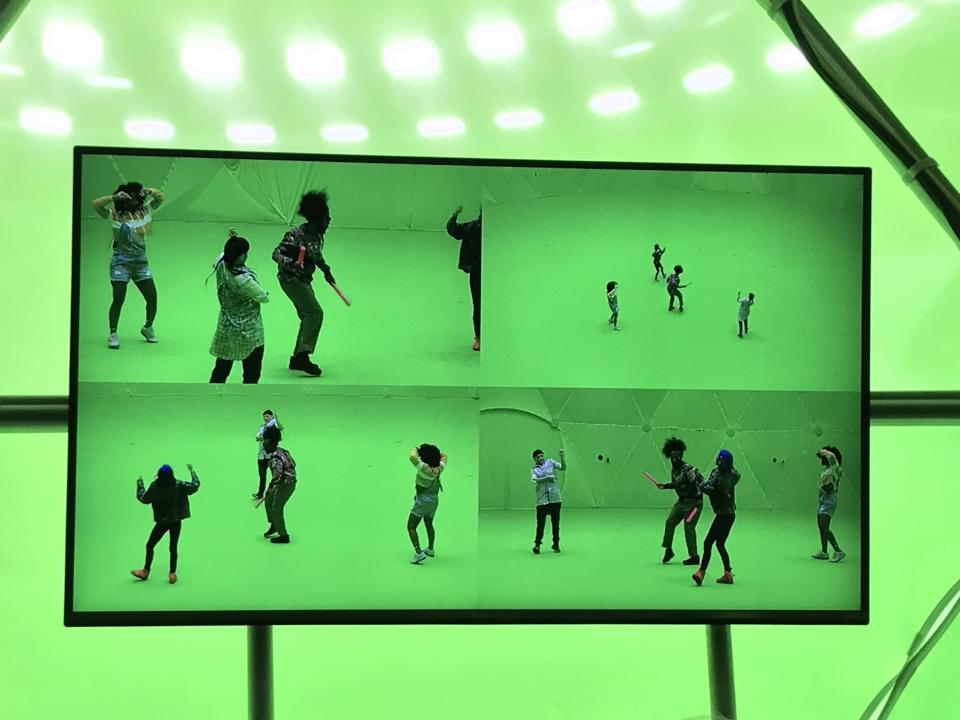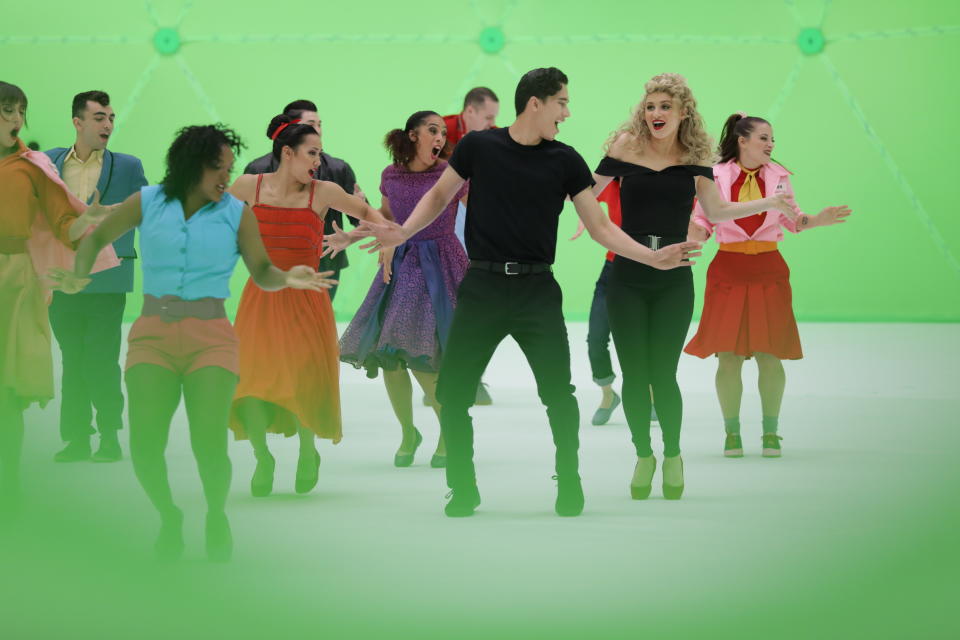Inside Intel Studios, the World’s Largest Volumetric Capture Stage

Click here to read the full article.
Imagine the prototype for a dome-shaped alien spaceship, put together with metal piping and neon-green fabric, and you’ve got a pretty good idea of how one of Intel’s latest projects looks like. Only, this dome isn’t about space travel, but the future of entertainment.
Tucked away on a soundstage in Los Angeles, Intel’s massive volumetric capture stage is meant to help Hollywood and others record actors, musicians and athletes for augmented reality (AR), virtual reality (VR), holograms and anything in-between.
More from Variety
The chip maker officially opened its Intel Studios facility in early 2018. Since then, the studio’s futuristic capture stage has been used for dozens of projects, ranging from a Reggie Watts VR music video to a volumetric performance of “Grease” recorded in partnership with Paramount.
The Intel Studio stage measures 10,000 square feet, making it the world’s biggest volumetric capture facility. It uses more than 100 individual 8K cameras, mounted all the way from the floor to the dome’s concentric ceiling. Intel Studios director Diego Prilusky told Variety during a recent tour that his team had long stopped counting them. “I don’t think it’s about the number of cameras,” he mused.
Each camera is connected to a battery of Intel servers housed on-site through a network of five miles of fiber-optic cable, capable of transporting data at a speed of terabytes a minute. In fact, the servers have so much data to crunch that Intel’s team had to build an insulated room to make sure that the noise was not interfering with the audio recording on stage.

The servers at Intel studios.
There are also dozens of bright lights mounted in circles above them dome, keeping everything in a constant bright light. In-between the lights hang a few cubes that look like 3D versions of QR codes, and are being used to calibrate the cameras before a shoot. And just outside the dome, there is a control center of sorts, with multiple screens giving staffers a first look at performers from different angles.

Reggie Watts performing at Intel Studios, seen from multiple angles on one of the facility’s monitoring units.
Prilusky told Variety that the chip maker sees Intel Studios as a long-term investment. “It’s a very serious commitment to the immersive video market,” he said.
That’s despite the fact that the market for AR and VR is still very much in flux. When Intel started to build the studio space back in 2016, the industry was still squarely focused on VR as the next medium for immersive entertainment. These days, there is a much bigger focus on phone-based augmented reality, in part due to lagging VR headset sales. Prilusky acknowledged that trend, but added: “From the studio perspective, it doesn’t really change much.”
The idea for Intel Studios is to capture volumetric footage that can be used in any kind of medium, be it AR apps, VR headsets, or even future devices that haven’t been commercialized yet. For instance, when Paramount visited the studio earlier this year to shoot a “Grease” performance, Intel used the results to build a demo for the Looking Glass holographic 3D display, as well as an interactive poster that utilized Leap Motion tracking to respond to bystanders.
“We are creating more capture than you can deliver to devices,” said Prilusky, who went on to compare the current stage of VR to 8-bit video games. The material captured at Intel Studios can’t just be exported to different surfaces, but also offers higher resolutions for future device generations. That’s why Intel is safe-keeping the raw footage, thanks in part to 10 petabyte of on-site storage. “I look at it as keeping the negatives,” Prilusky said.

A “Grease” performance being recorded at Intel Studios.
Intel isn’t the only company operating a volumetric capture space. Microsoft has been running its own Mixed Reality Capture Studios, and also licensing its technology to third-party vendors. Verizon Media and others have increasingly built their own volumetric capture studios in-house. However, these capture spaces are generally far smaller than what Intel Studios is offering, and often only capable to record one person at a time. That’s good enough if you need a 3D hologram for an AR app, but not if you want to record a full-blown musical performance.
Intel Studios filmed 20 performers for the “Grease” capture, and had about a dozen people on stage for Reggie Watts’ “Runnin.” The futuristic VR music video that lets viewers freely bounce around in a 3D space, at times turning the ceiling into a dance floor.
Intel Studios has also been used to record other artists, athletes and more. Part of the studio’s mandate has been to actually build a sustainable business. “There is a commercial aspect,” said Prilusky. “The objective is (to become) the home for immersive media filmmaking.”
At the same time, Intel Studios is also cooperating with Hollywood institutions like Paramount on research projects, and is even getting requests from universities interested in the future of media production. In the end, having a studio that works on commercial projects was the best way for Intel to also learn about the space, suggested Prilusky. “If you have a lab that is too clean, you are disconnected from the world.”
Sign up for Variety’s Newsletter. For the latest news, follow us on Facebook, Twitter, and Instagram.

